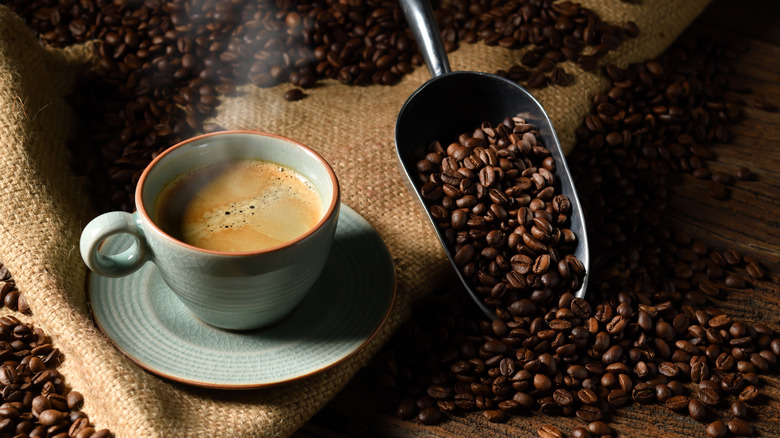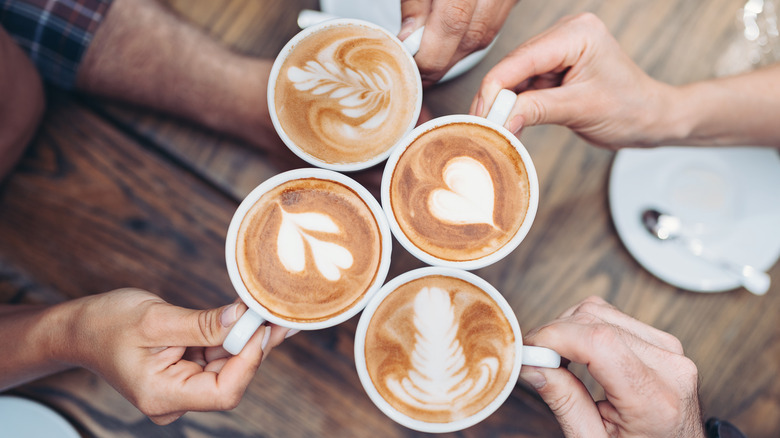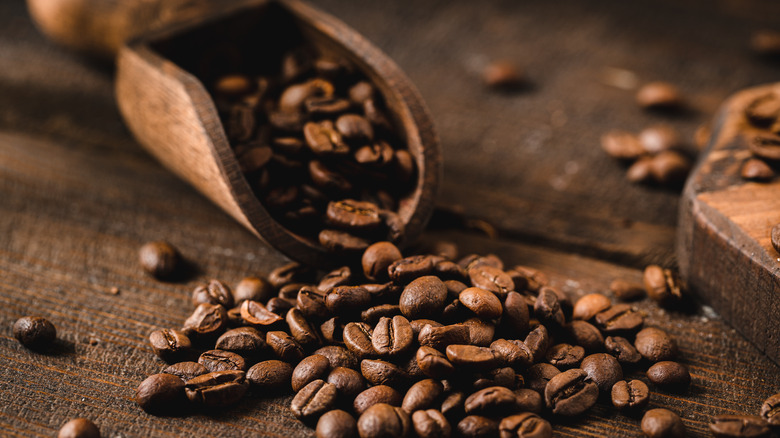Turns Out Decaf Coffee Does Have Caffeine
While the energizing boost from a morning cup of joe can often be a welcome side effect, there are several reasons why someone might reach for a decaf instead of a classic cup of coffee or a shot of espresso. Those who are sensitive to caffeine, some pregnant people, or even just those who want to enjoy a cup of coffee after dinner without being up all night.
Having the option to reach for decaf coffee is important since many social connections are built around coffee consumption. A decaf coffee is a great tool for someone who still wants to participate in the communal aspects of coffee drinking without being overloaded with caffeine. Even if you are sipping solo, there is also a pleasant and familiar ritual found in the preparation and enjoyment of a cup of coffee. Plus, the taste is undeniably delicious.
Luckily, there are ways to decaffeinate coffee beans. However, it is important to note that the decaffeination process does not result in coffee that is completely caffeine-free. While the caffeine is greatly reduced, there is still a small amount left over — around 3%, to be exact — or 2 to 15 milligrams of caffeine per eight-ounce cup.
Careful, some caffeine is leftover
Remember, the term decaf is not synonymous with caffeine-free. Even after coffee beans have been processed using one of the decaffeination methods, this removes about 97% of the caffeine. A cup of regular coffee typically contains about 80 to 100 milligrams of caffeine whereas a decaf version has about 2 milligrams. In order for a coffee to be sold as a decaf, it needs to contain less than 0.3% of caffeine.
While the amount of caffeine per cup of coffee is greatly reduced, for anyone who has to avoid caffeine entirely, decaf coffee might not be the best choice. However, nursing a warm cup of chamomile tea is a delicious and enjoyable caffeine-free option.
It is interesting to note that the caffeine removed from the raw beans doesn't go to waste in the decaffeination process. It is frequently sold to beverage companies to caffeinate your favorite soda drinks. Alternatively, it can be sold to pharmaceutical companies for the creation of caffeine supplements.
How is decaf coffee made?
The process of decaffeinating coffee beans was actually discovered by accident. In the early 1900s, a German coffee merchant received a shipment of coffee where a few bags happened to be soaked by seawater during transport. Instead of discarding the water-logged beans, he decided to roast them anyway and sample the results. He discovered that the coffee still tasted basically the same, but came without the jittery side effects.
Today, there are a few different ways to make decaf from green, unroasted coffee beans. The process of washing the beans with water, called the Swiss water process, is actually still used — but it's fresh water, not salt. Another method involves applying a chemical solvent to the beans. This is most commonly methylene chloride or ethyl acetate. While the concept of adding chemicals to coffee beans sounds risky, the method has been deemed safe by the FDA as an effective process for decaffeination. Any chemical left on the beans is negligible.
Lastly, there's the supercritical carbon dioxide method where C02 is used to dissolve the caffeine. There's a lot of science involved, but the short version is that carbon dioxide is heated and put under great pressure, which causes the beans to release caffeine.
After the coffee has gone through one of the decaffeination methods, the beans are cleaned and roasted. These high temperatures ensure all the liquids used in the process evaporate, leaving nothing but delicious coffee beans behind.



